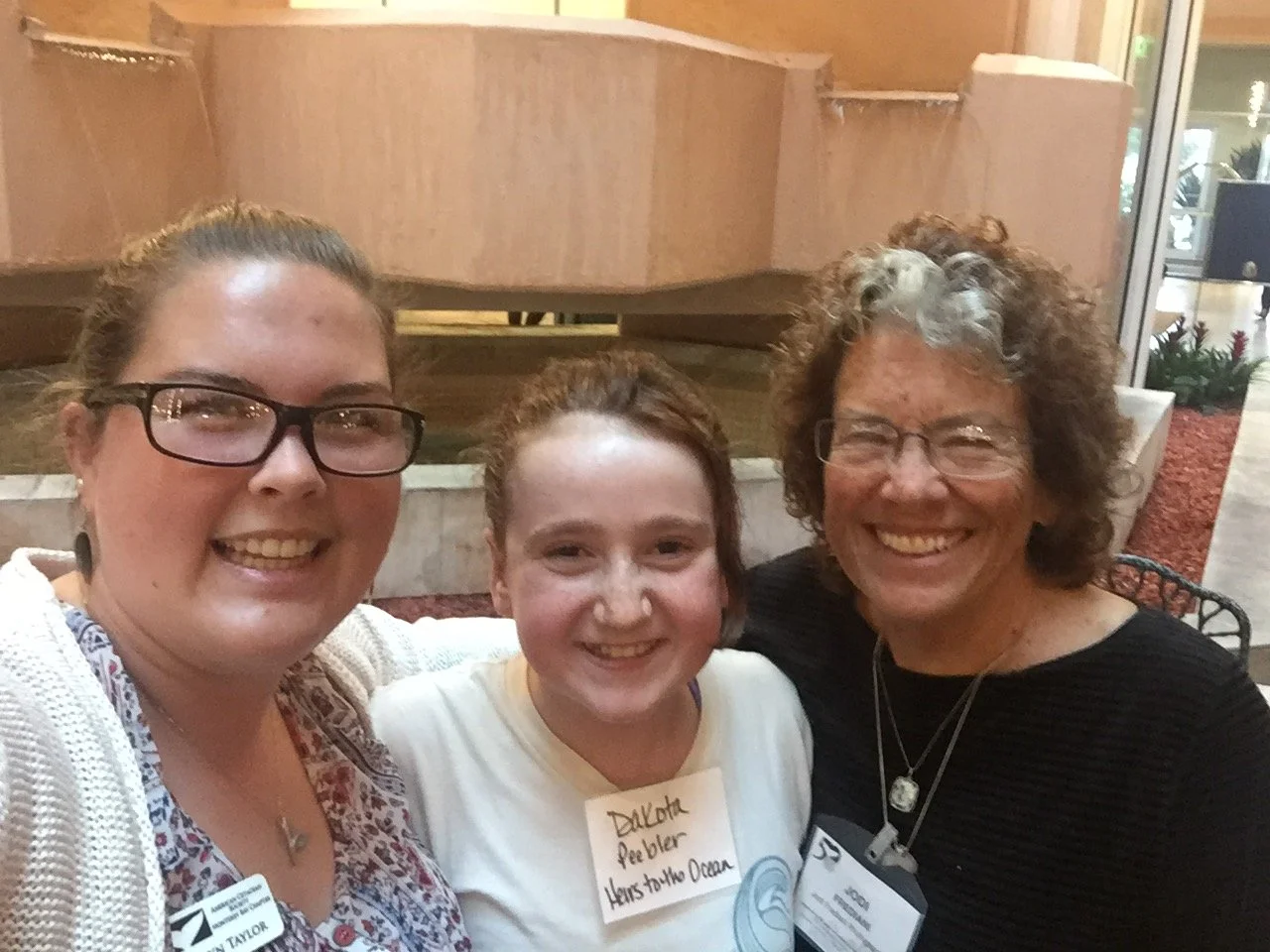A log or a baby sea otter?
A story from Dakota Peebler.
Sea otter mom and pup
Dakota, 13-year old member of Heirs to Our Oceans (H2OO), has the good fortune to go kayaking with her family and sees a log that turns out to be a baby sea otter. Learning all about these charismatic weasels becomes one of her H2OO projects, so she can help with their conservation.
DAKOTA PEEBLER is a member of Heirs To Our Oceans, a group of seventeen home-schooled kids, ages 10-13, from the San Francisco Bay area, who are taking the ocean crisis into their own hands. They are making a movie about human impacts on the oceans and how these impacts are affecting their generation and their health, as well as future generations. The movie is also going to cover their journey and they hope will turn their movement into a global one. As part of their efforts, they have been going to beach cleanups, protests and anywhere else where they can have a positive effect on our oceans.
Heirs To Our Oceans hopes to engage kids all around the world, encouraging them to take action telling family, friends, siblings and everyone to recognize that their daily actions affect their generation and their health.
Each child in the project has a specialty area. Dakota has two specialties in the project. The first is sea otters, which are a keystone species in the marine ecosystem. Dakota has been researching sea otters for four years, so she was eager to be able to research them further and study them whole-heartedly through this project.
Her second area of specialization is in Palau where her area of focus is their endangered species and creating marine sanctuaries to protect them. Dakota chose this specialty because her mom worked in Palau doing environmental law involving sharks, and, as a result, Dakota became interested in studying the endangered species there and helping protect them through marine sanctuaries.
Dakota was born in the San Francisco Bay area and grew up in San Mateo. She is eleven and is home schooled. She originally came to Monterey Bay to visit the Monterey Bay Aquarium with her family. They enjoyed it so much, they’ve continued going back and have fallen in love with Monterey Bay.
You can watch Dakota’s story on Youtube here:
A LOG OR A BABY SEA OTTER?
My family and I went kayaking in Monterey, and we were hoping to see some wildlife. We were kayaking along and we saw this little log, and we thought it was a baby sea otter, but it wasn’t. And then we thought it was a baby sea otter again! And then we thought it was a log. Then we thought it was a baby sea otter! Well, it actually was a baby sea otter!
It was crying for its mom, and we were just like going, “Oh no, what are we going to do, it doesn’t have its mom?” And then its mom just came up and grabbed the baby sea otter. It was a really fantastic experience, just like seeing the baby sea otter reunited with its mom.
So after that, I was whole-heartedly researching sea otters. I wanted to protect the sea otter, and I wanted to conserve the sea otter. So after I joined Heirs To Our Oceans, the goal was to find a scientist or researcher focusing in on the area of focus that I have. So I found Dr. Melissa Miller. She is a veterinarian and a sea otter pathologist.
Dr. Miller works with the Marine Wildlife Veterinary Care Research Center in Santa Cruz, and I was lucky enough to be able to do a necropsy on a sea otter with her. It was really cool. We found out the sea otter had died from a shark bite. Not from the shark bite itself, but from the bacterial infection that got into the shark bite after the otter got wounded. It was really a fantastic experience!!
Sea otters are important because they are a keystone species. They eat sea urchins and sea urchins eat kelp, so when the sea otters’ population goes down, the urchin population has no other key predator. You could probably find another predator, but the urchin’s main predator’s population has gone down, so the urchin populations increase.
They eat all the kelp and then create an urchin barren which is basically a desert. You can look it up on your phone or whatever. It’s really a desert of urchins. Kelp, along with the other main botanicals of the ocean, gives us 80% of our oxygen. So, we need our kelp and we need our sea otters.
Also, kelp absorbs vast amounts of carbon from our atmosphere to create its leafy structure, and it can absorb twelve times more carbon when sea otters are keeping urchins in check. So sea otters are very important.
The main source of sea otter mortality is land/sea pollution, including a parasite, which comes from our pet cats’ poop. You probably know about this, Toxoplasma gondii. It’s been getting into sea otters and it’s affecting their brain, as does domoic acid, which comes from harmful algae blooms, which are being worsened by fertilizer runoff. Domoic acid accumulates in food sources eaten by sea otters. It’s affecting their brains and causing them to have seizures, and it’s causing them to die.
So, sea otters are affected by many threats.
Thank you for sharing your story with us Dakota!


